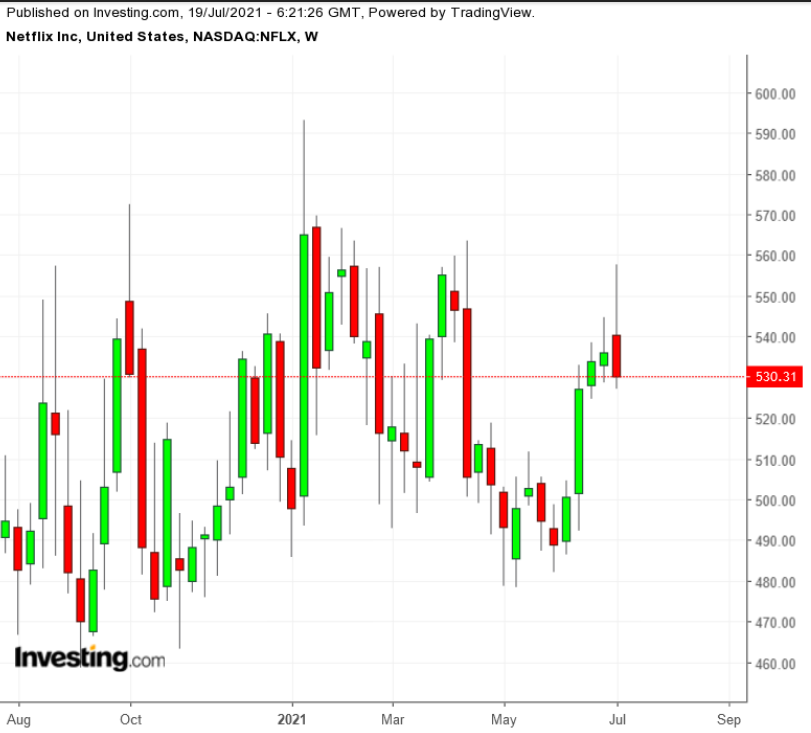- Reports Q2 2021 results on Tuesday, July 20, after the market close
- Revenue Expectation: $7.32 billion
- EPS Expectation: $3.1
There is consensus among Wall Street analysts that the streaming entertainment giant, Netflix (NASDAQ:NFLX) won’t have much to impress markets with when it releases second-quarter earnings tomorrow.

The major boom during the stay-at-home environment of the past year, fueled by pandemic related lockdowns, that pushed the company’s number of subscribers to more than 200 million in more than 190 countries is already over. Indeed, during the first quarter, the Los Gatos, California-based company added just 3.98 million subscribers, compared with an average analyst estimate of 6.29 million and its own forecast of 6 million.
That marked the weakest start of a year since 2013, when Netflix added about 3 million customers, according to Bloomberg data.
If the company’s forecast for adding just one million subscribers holds for the period that ended on June 30, it will be the worst three-month stretch for Netflix since the early days of its streaming service.
In the short-run, that sudden reversal in growth is having a negative effect on the company’s share price. After gaining more than 60% in 2020, its stock has hardly budged this year. It’s down 2% for the year, closing at $530.31 on Friday.
Still, for investors following management's guidance closely since the pandemic began, this outcome is hardly a surprise. Netflix has been warning for months that growth would slow after customers emerge from their COVID-19 restrictions and restart their normal routines.
Unprecedented Competition
Nevertheless, if the battle in the post-pandemic world is to keep subscribers from cancelling their subscriptions, then it’s clear Netflix remains well-positioned to win this race. According to the company's quarterly letter to shareholders, the churn rate, or number of subscribers ditching the app, was down from a year ago—even after the service raised its subscription price.
Netflix is facing unprecedented competition in the video streaming market where rivals such as Disney+ (NYSE:DIS), HBO Max (NYSE:T) and Peacock (NASDAQ:CMCSA) along with other deep-pocketed providers, such as Amazon (NASDAQ:AMZN), are vying for market share.
As the pandemic gradually recedes, Netflix plans to produce more shows after a year of production drought. The company is aiming to spend $17 billion in cash on programming this year, up from $12.5 billion last year and $14.8 billion in 2019. NFLX is prioritizing investments in programming outside the U.S., where most of its new customers reside.
Another positive development long-term investors should take into account: Netflix is no longer dependent on debt to fuel its growth. After years of borrowing to fund production, Netflix has said it no longer needs to raise outside financing to support day-to-day operations. The company plans to reduce debt and will buy back up to $5 billion of shares.
Bottom Line
After the “pull-forward” effect of COVID-19, Netflix's subscription growth will continue to slow when compared with last year. But the streaming company has emerged much stronger from the unique environment of the past year, solidifying its cash and its market position. Any post-earnings weakness in its stock provides a buying opportunity for long-term investors.
